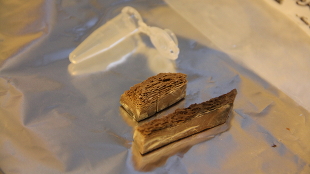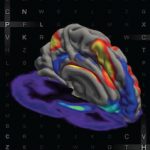
Researchers have generated a complete genome sequence from the bone of a horse that lived roughly 700,000 years ago, according to a study published today (June 26) in Nature. The data represent the oldest whole genome ever sequenced, almost 10 times older than the previous record—the genome of a 80,000-year-old hominid from the Denisova cave in Siberia. The genome has also provided new perspective on several aspects of horse evolution.
The study offers “the tantalizing proposition that complete genomes several millions of years old may be recoverable, given the right environmental conditions,” wrote David Lambert of Griffith University in Australia and Craig Millar of the University of Auckland, Zealand, in an accompanying commentary.
Indeed, even in temperate environments it may be possible to recover DNA that is half a million years old, said lead author Ludovic Orlando of the Center for GeoGenetics in Copenhagen, Denmark, speaking at a press conference held at the World Conference of Science Journalists in Helsinki, Finland. That opens up the possibility of getting genomic information from ancestral human specimens like Homo heidelbergensis and Homo erectus.
“Such genomic information, in combination with the Denisovan and Neanderthal genomes, would undoubtedly shed light on the evolution of humans and our hominin ancestors,” wrote Lambert and Miller.
In 2003, Orlando and colleagues unearthed a fossilized fragment of bone from the permafrost in the Yukon Territory, Canada. The bone turned out to be from the leg of a horse and was found to date from approximately 560,000–780,000 years ago. Using samples taken from the bone fragment, the researchers performed sequencing with the second-generation Illumina machine, as well as the Helicos platform, a third-generation tool that enables single-molecule sequencing without previous amplification, thereby reducing the risk of contamination and increasing access to small fragment of endogenous DNA. Though the proportion of horse DNA in the sample read by the Helicos platform was still only 4.21 percent—compared to 70 percent for Denisovan man—it was enough to generate a whole draft genome.
For comparison, the researchers also sequenced the genome of a 43,000-year-old horse, five contemporary domesticated horse breeds, a donkey, and a Prezwalski’s horse, which is thought to be the last surviving truly wild horse on the planet. The data were used to address several question in horse evolution. First, the researchers calculated the time to the most recent common ancestor of all species in the Equus genus, including modern-day horse, donkeys, and zebras, to between 4 and 4.5 million years ago—twice as old as previously thought. “So they have about twice as long to diversify into what we know as the Equus groups today,” said study coauthor Eske Willerslev, also at the Center for GeoGenetics.
The team also found no genomic evidence to suggest that the Prezwalksi’s horse has mixed with domestic horses, thereby confirming that it is the last truly wild horse. “There is no domestic genetics present in these horses,” said Willerslev. Furthermore, the Prezwalksi’s horse has retained significant genetic diversity, good news for the future of the species.
The researchers also found evidence in domestic horses for the positive selection of the genes associated with olfaction and the immune system, suggesting these might be genetic signatures of domestication.
For most researchers, however, the real significance of the study lies in the fact that it pushes the timeframe for paleogenomics back by almost 10 times. “Until this study, many experts would have thought that it was impossible to recover a genome from a sample of this age because of the rapid degradation of DNA into ever shorter fragments that occurs following the death of an organism,” wrote Lambert and Miller in their commentary.
The main reason such a feat was possible is that the bone was buried in the extreme cold of the permafrost. But although it was in relatively good shape for such an old sample, the DNA was still “super poorly preserved,” added Willerslev. Indeed, it was only thanks to recent advances in DNA sequencing technology—including single-molecule sequencing and improvements on the informatics side—that the researchers were able to get a whole genome from the surviving short DNA fragments. Intriguingly, they also used mass spectrometry techniques to sequence 73 proteins, including some blood peptides such as coagulation factors, suggesting that proteomics approaches might also be used on well-preserved ancient specimens.
“We were amazed about the quality of the sample,” said Orlando. “We not only beat the record for [oldest] genome characterization by almost an order of magnitude . . . we also discovered that a whole bunch of omics approaches can be used to characterize the deep evolutionary past.”











RSS